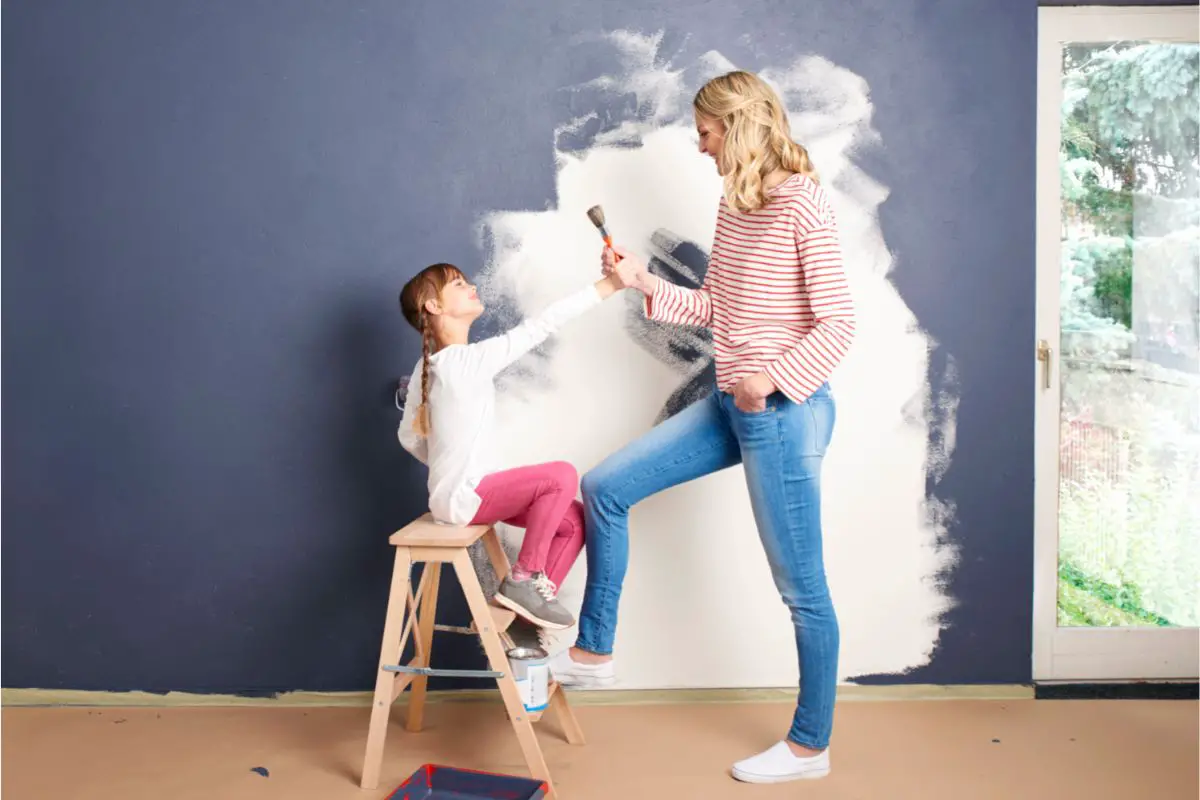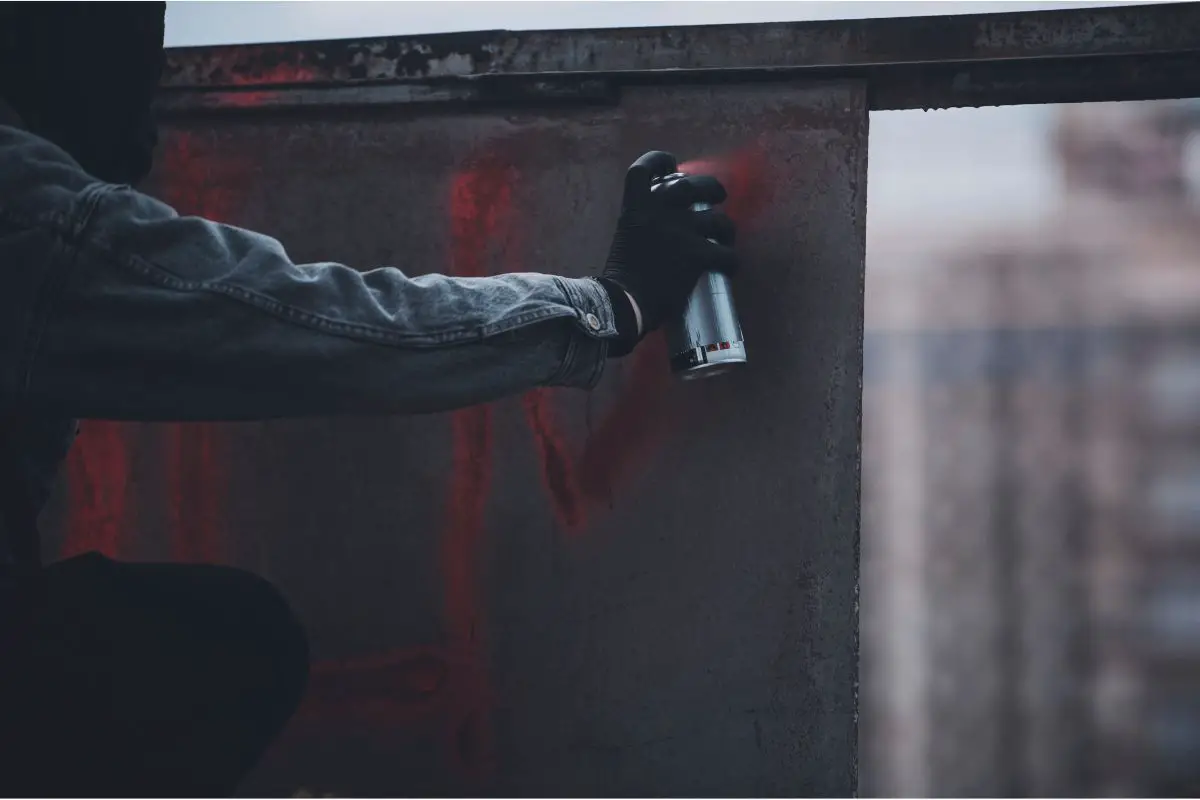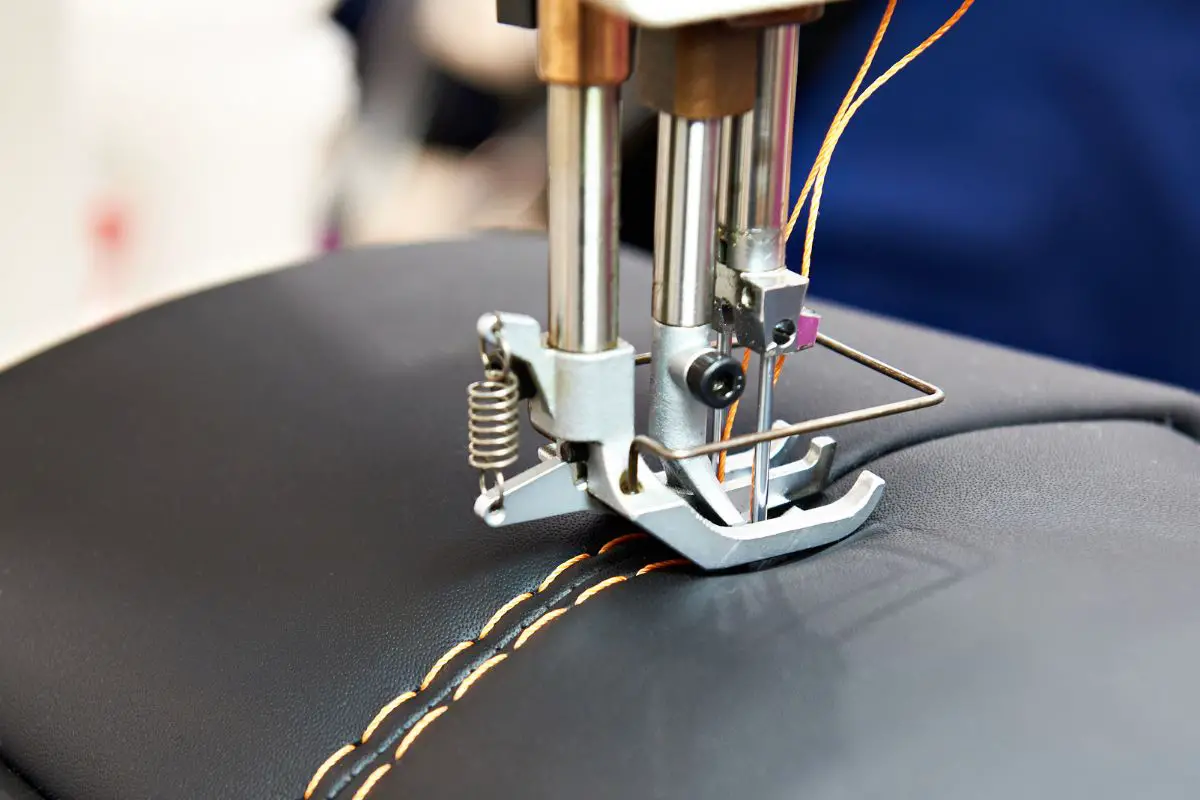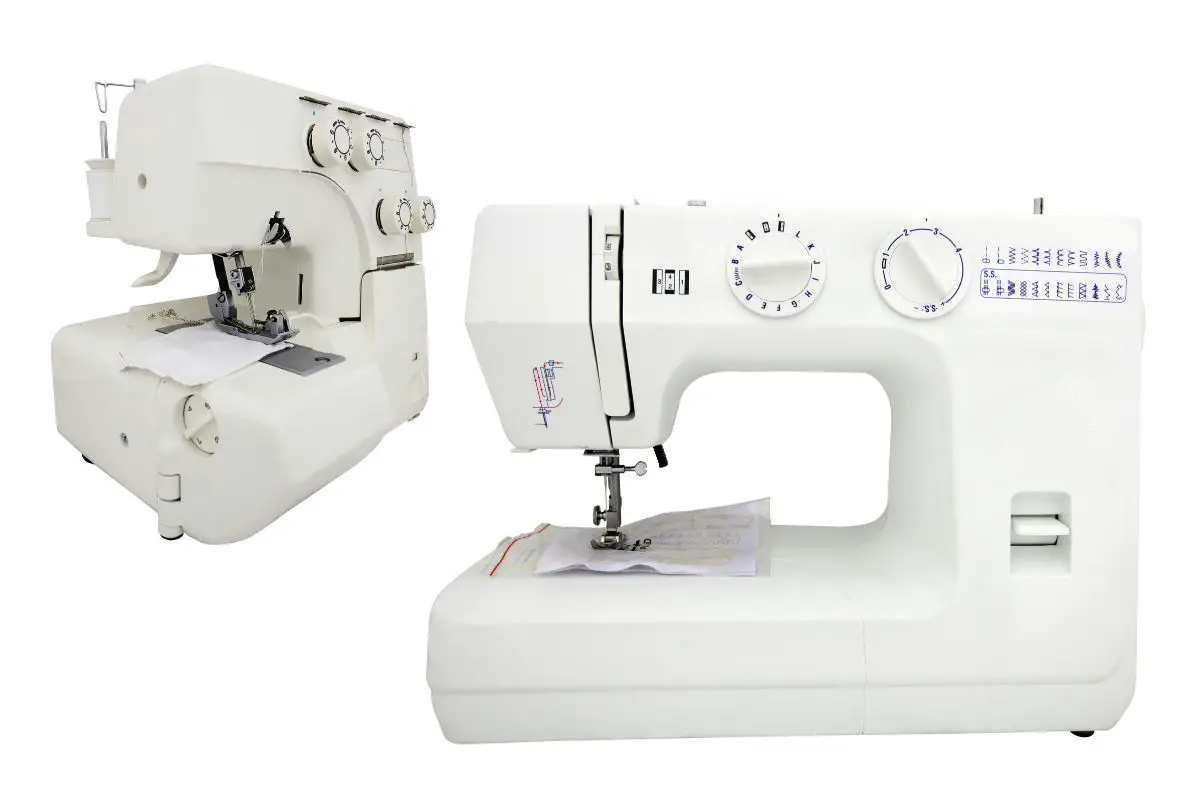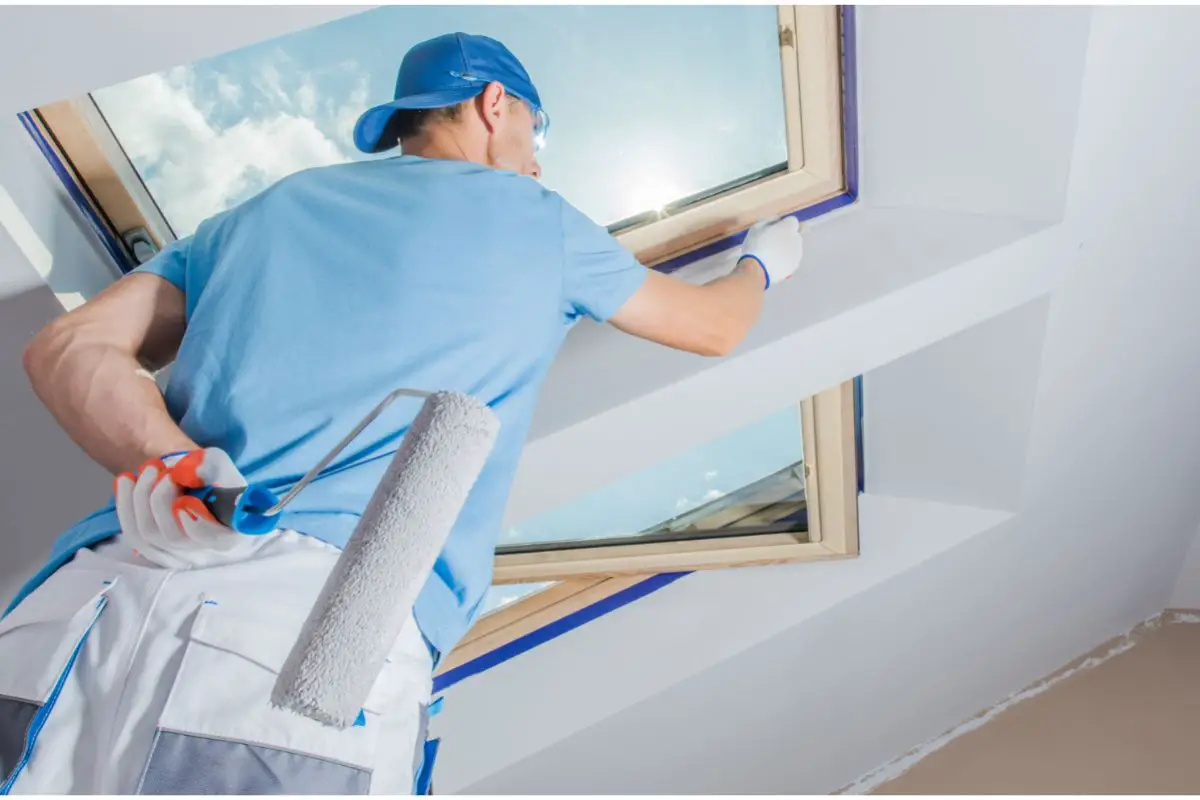If you are preparing to paint a surface, whether this is your walls, or your furniture, one consideration which you need to make is what finish you are going to choose.
The two most common finishes you will find with different types of paint is satin or flat.
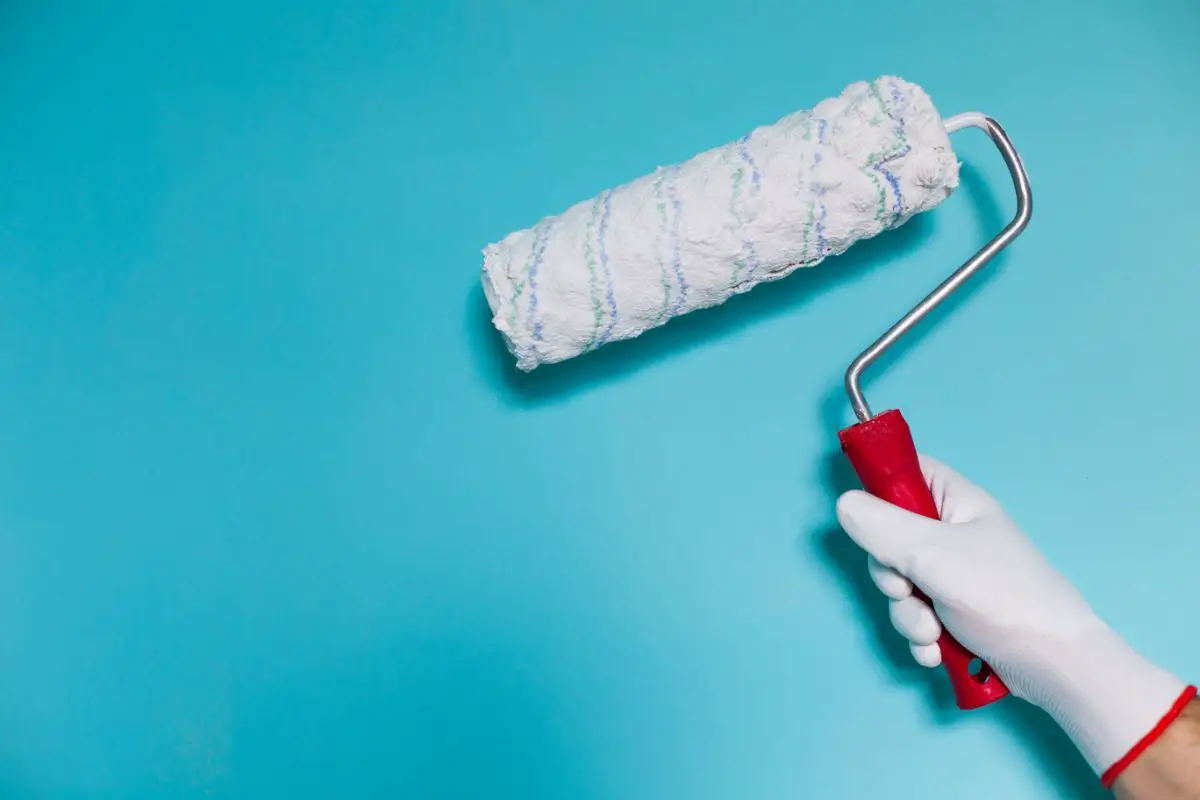
While a lot of people can assume what the differences are between these two types of paint, you will want to ensure that you know all the differences before making your mind up.
And, if you know most of the differences, this can make choosing between the two types of paint significantly easier.
Generally speaking, the main difference you will find between a satin finish paint, and a flat paint, is the finish, as you can imagine.
A satin paint will have more of a sheen, whereas a flat paint will have little to no sheen that you can notice. However, while this is the main difference, they also vary in their durability, how easy they are to maintain, and some other factors as well!
As you will notice while you are shopping for paint both paints with a saying, and with a flat finish are quite popular, so if you like a certain color, you will likely not struggle to find it with one of these finishes.
This makes liking one of these finishes a good choice since they are the most common types of paint to find and they are easily accessible.
If you understand what the pros and cons are of each type of paint, you will be able to choose which project will work best for your various projects, and this can make decision making in the future significantly more simple.
So, if you have any questions about picking between satin and flat finish paint, keep reading!
Key Differences
While it may not seem like an important decision to make, especially compared to something as substantial as the color, choosing the finish of the paint is actually incredibly important.
The difference between a satin and a flat finish will completely transform whatever you are painting, and some will work a lot better on different objects or surfaces.
So, making sure you understand what sets them apart is incredibly worth doing. In this section, we will do a quick overview of how these different paints stand out from each other.
Firstly a satin paint will have a strong color with a noticeable sheen, whereas the flat paint will have an equally strong color, but with no sheen.
The finish of a satin paint has a soft luster, while the finish of a flat pain is instead matte.
A satin paint will tend to be both more tough and flexible, this means it will work well in high traffic spots and deals well with wear, while a flat paint is much less flexible and will likely deal with wear issues.
The coverage of a satin paint is reasonable, whereas a flat paint will have much better coverage.
However, maintaining a satin paint is easier since they stand well to wear (see also ” Eggshell VS Satin Paint: What Differences Are There?“), and this makes them simple to clean, while a flat paint will be more susceptible to scuffs and scratching, and if you scrub it, the paint can start to come off.
A satin paint will usually have a more moderate price, this is compared to a flat paint which generally will be a bit cheaper.
Using a satin paint will also be a little tougher since applying it can be difficult and if you add touch ups they are not easy to hide, while with flat paint, it is easy to use, and if you add a touch up it will blend in well!
Satin Finish
As we have mentioned before, a satin paint will tend to have quite a soft luster, with it being described by some as looking more like velvet.
This will reflect just enough of the light that it has a noticeable sheen.
It is worth noting that while there is a sheen, this is not by any means a glossy paint, so if this is what you are looking for, you will need to find something more specific, or mix a custom batch.
This paint will reflect some light, however, it is not that easy to spot if it is on a perfectly smooth surface.
The finish of a paint will usually be influenced by the ratio of the binders to the pigment.
For example, if there is more binder in the paint, it will look more glossy, when looking at the ratio of pigment to binder when it comes to paints, a satin paint will usually land in the middle.
This means that satin paint will have a little more binder than a flat paint would, however, less binder than a gloss or semi-gloss paint. By having this binder, the satin paint has more durability as well as flexibility.
This makes it a better choice than a flat paint if you are using it in a high traffic area. This is also what makes it easier to clean because the extra binder makes it water-resistant too.
However, because of the lower amount of pigment, it is a little harder to get amazing coverage than a flat paint, this means that you will usually need more than 1 coat, but this depends on the brand.
It is worth noting that because of how much the satin reflects the light, it can make imperfections stand out a lot more. This also makes the job of applying it a lot more difficult.
If you are working with this paint and putting it over a dry edge, it can very easily end up looking uneven and not getting the desired result.
This is also what contributes to the touch ups looking a lot more obvious. So, if this paint gets scuffed and you want to cover it, using the same paint will still stick out once it has dried.
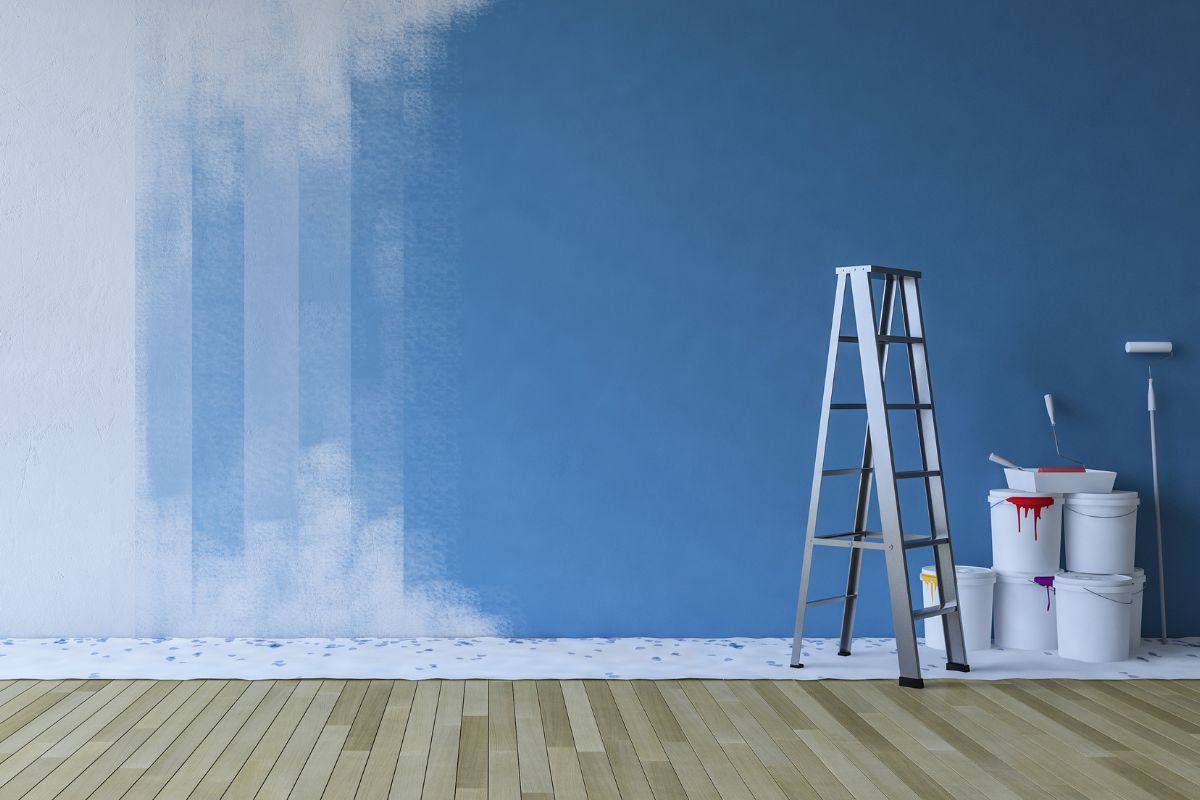
Also, worth pointing out, but satin paint usually ends up costing a bit above average when compared to other types of paint.
However, if you are just looking at the difference in price per can, then the difference is not too much, but, for a large space, the difference adds up.
Satin Paint Pros And Cons
The strengths of satin paint is that it is easy to clean compared to alternatives because of the binders it contains, this also contributes to it being moisture resistant as well.
This type of paint is also more durable compared to a flat paint too. The coverage you get from this paint is also pretty good as well.
However, the disadvantages of using satin finish paint is that the imperfections you end up with when painting will be a lot easier to notice. Applying satin paint can also be quite difficult as well.
This type of paint will usually end up costing more than flat paint. Also, if you need to add touch ups to your paint job, they will usually stand out!
Flat Finish
As the name suggests, flat paint will have a matte finish, this means it reflects a lot less light than a paint with a glossy or satin finish.
Once flat paint has been applied onto a surface, there will be a complete lack of any sheen and this makes the paint look a lot more uniform.
This also means that the paint will not be impacted by any colors reflecting onto its surface or any perhaps alterations from any bouncing light.
Compared to other types of paint, flat paint contains the least binders, and instead has the highest amount of pigment.
This means that flat finish paint will have amazing coverage, however, this also means that the paint is a lot less durable and a lot less flexible.
This is why flat paint ends up being the hardest type of paint to clean, this means that when you are scrubbing dirt off this paint, you will often end up scrubbing off not just the dirt but the paint as well.
If you do this too often, the surface underneath will eventually start to show and will make the paint job look very uneven.
Compared to a paint with more binders, flat paint will show any wear or tear a lot quicker.
The potential scuffs or scratches are not hidden and will show easily on the surface, this means that you will often need to apply touch ups which can be frustrating if you want a more low maintenance paint.
However, the act of applying flat paint is at least easier. This is because the color will look a lot more consistent and if you apply wet paint onto a dry edge it will still end up looking good (see also “How To Make Your Spray Paint Dry Faster“).
This is also aided in how the higher amount of pigment improves the coverage and this helps the paint go further making it an economical choice!
Flat Paint Pros And Cons
Our favorite feature of flat paint is how good it is at hiding any imperfections in the paint, this is also impressive considering how cheat flat paint tends to be.
Flat paint is also a good choice for how easy it is to apply, so if you are new to painting you do not need to worry.
Part of why flat paint is so easy to work with is that it has great coverage, and if you need to add any touch ups they will blend into the paint easily. It also tends to be a bit cheaper than more expensive paints like satin or glossy.
However, this type of paint is held back by how it is less durable than other types. On top of this the potential scratches and scuff are not well hidden by the paint.
If your paint gets any dirt on it, you need to keep in mind that it is not too easy to clean either. This is partially because flat paint is not very moisture resistant.
What Is The Difference
In this section we will go through the main differences between satin and flat paint so you can have them all laid out and easy to pick out.
If you know exactly what these differences are and understand the characteristics, it will be easy to work out which will be best for you!
Firstly, there is the appearance of the paint, this is where the most obvious difference between satin and flat finish paint is.
You will find that a satin paint will have a soft luster, whereas the flat paint will have a completely matte finish that reflects little to no light.
While the quality to reflect light can vary, the look of this paint on different surfaces can vary depending on surroundings. For example, satin paint can have its color impacted if the light hits the surface directly and has light bounce off of it.
This can make the paint look lighter in certain conditions. This is why a flat paint will generally have a more consistent color.
This is because there is very little light reflecting off it that could impact the color. However, this also means that satin paint will give areas more depth, this is why it is popular in bathrooms, hallways, and children’s bedrooms.
However, satin paint makes blemishes a lot more obvious because of the light reflecting, while this does not happen with flat paint.

The next main difference between satin paint and flat paint is the different finishes they have. As you can imagine, satin has a more glossy finish when compared to a flat paint.
This sheen can often be seen being compared to a velvet style texture, or pearlescent. This is a noticeable shine, but more subtle than glossy paints.
Compared to this, flat paint has very little gloss because of the lack of binders in this type of paint. Both of these paints have a very smooth finish, however, there is a higher chance of having application issues with a satin paint.
One of the main factors between satin and flat paint is the durability, and in this category, satin paint outperforms flat paint considerably.
This is because of the high binder content in the satin paint, this makes it a lot more flexible and durable.
This means that it will be better at resisting stains, dings, and scratches.
Having a tougher surface is what makes it easier to clean as well, so if you give this paint a gentle wash it will not damage the paint, but if you are doing it aggressively, it could get damaged.
This paint will also be better at resisting moisture, this is why it is a more popular choice for bathrooms! Since flat paint has less binder, it is less flexible, and much less durable, this means it will stain easier, but be harder to clean.
While flat paint is outperformed in its durability, it outperforms satin in terms of its coverage. This is for the opposite reason, since the more pigment and the less binder, the better the coverage will tend to me.
This means that a flat paint will usually give you more color in just one coat.
This means that you can save money while painting since you will not need to get another coat. If you add more binders, the coverage will end up being an issue, but since satin paint has a good balance, this is not as much of an issue.
When it comes to maintaining satin and flat paint, both have their own benefits and drawbacks.
For example, as previously mentioned, satin pain is much easier to clean since dirt will easily come off, however, if you need to add a touch up to a satin paint job, this will be less simple since it will usually stick out.
However, if you are working with flat paint, it will generally be harder to clean without taking paint off, but this is balanced by touch ups blending into the rest of your paint job a lot easier.
When it comes to the ease of use of these two types of paint, it is generally considered that a flat paint is a lot easier to work with. This is because of the coverage and how well it blends even if you are painting fresh paint onto dry.
The lack of sheen you get from a flat paint means that painting using the standard W pattern will work well and makes it a quicker paint to work with.
However, with satin paint, painting wet over dry will make a very inconsistent sheen, and the lines will show up very clearly, this means that if you want to do the W technique you will need to work incredibly quickly, or find a new technique.
Generally speaking, flat paint will beat out satin paint with its cost. The difference is usually about $5 for every can, but this can of course change based on the brand and color.

This difference does not seem like a lot to some people since painting can be an expensive job, but if you are painting a big surface, you need to keep in mind how many cans you are buying and how this can add up.
Also, keep in mind that you might need to buy more satin since it will likely need more layers, however, it is also more likely to last longer.
Finally, you should consider the best uses of each of these styles of paint, of course most of these different paints can be used in the same way, however, different types work better in different situations.
For example, people tend to prefer using flat paint for ceilings since you do not tend to want a sheen on your ceiling, and they usually do not need much durability.
Flat paint will tend to be used in low traffic areas, like bedrooms, and dining rooms, or a home office, areas where walls will not be touched as often.
This is why satin paint is preferred in higher traffic areas since this is where the extra durability and the ease of cleaning will be preferred. For example kitchens and kids rooms.
They are also the preferred choice for bathrooms because of how they do not absorb moisture. Satin paint is also preferred for hallways since it adds more depth to these liminal spaces.
Which Paint Is Better?
Generally speaking, you can not say that satin paint or flat paint have a clear superior, but what you should be considering is which is better in the specific situation you want the paint to be used in.
If you want a paint for a low traffic area, then use flat paint, but if you want it to be durable and moisture resistant, then use satin.
However, you do not always have to play by these rules, but if you generally keep them in mind, you are less likely to regret your decision, and more likely to not need to repaint as often.
You will also want to keep your budget in mind, for example, if you have a higher budget, you can usually afford to have more satin paint used, however, if you are working with a more limited budget, you may have to use flat paint where you would prefer to use satin.
However, you also want to think about the overall aesthetic you are looking to achieve as well.
Some rooms will just be styled in a way that flat or satin paint will work a lot better, so painting samples to see this is a great way to work this out.
Can You Make Satin Paint Flat?
If you are stuck with some satin paint and you are aiming to make it look a little less glossy, then there are actually some options that are worth considering if you want to change its appearance.
One of the first things to try is adding a flat topcoat, this will offset some of the sheen and you will still get the color from the paint underneath, however, it can be hard to get a consistent paint job doing this method.
You could also try using a commercial deglossing agent, however, you will want to ensure that the liquid is properly prepared. Make sure to check reviews when using one of these though.
Summary
Hopefully this article has given you the insight to choose between a satin and a flat paint efficiently. Choosing which is best can be a hassle, so working with samples is a great idea.
However, ensure that you are working within your budget too.
- How To Sew Fabrics Together - June 5, 2023
- How Many Stitches Per Inch? - June 5, 2023
- How Long Does It Take To Sew A Dress? - June 5, 2023


